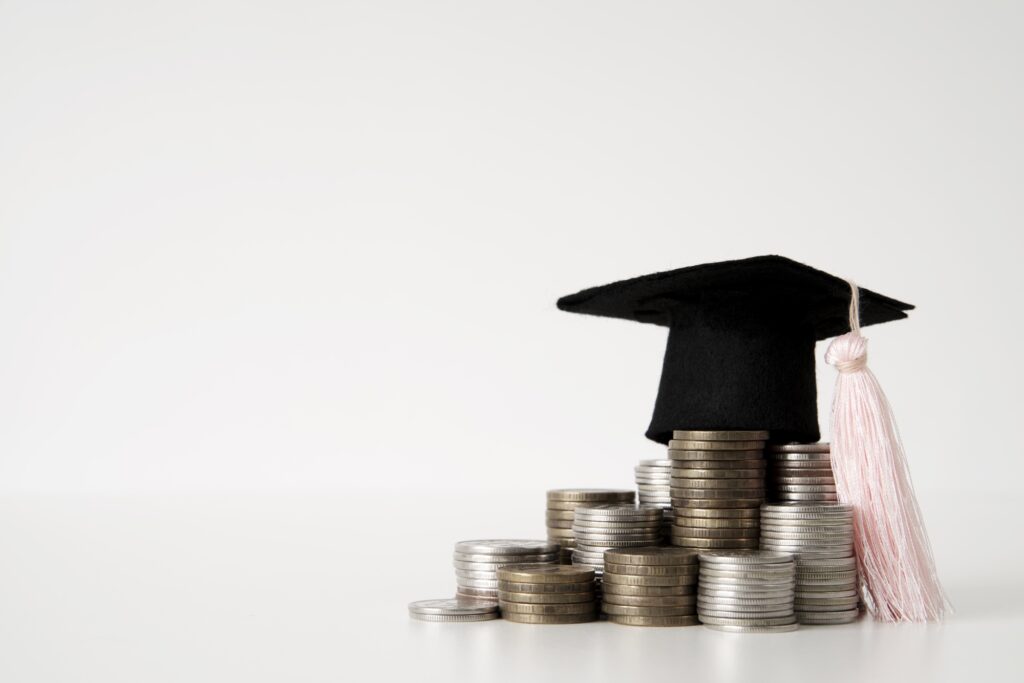Should You Take Into Account Private Student Loans?
When deciding whether or not to get private student loans, what is important is what is best for you. It’s possible that you didn’t meet the requirements to get a sufficient amount of cash in the form of federal student assistance, and now you need a supplement from private student loans. Or maybe you have an unexpected expense come up in the middle of the semester that requires you to have more money than you anticipated.
No matter the motivation, it is essential that you investigate your alternatives to locate a private student loan that meets your specific needs. It is possible to choose from various businesses, each of which provides a selection of customizable term lengths and interest rates that are among the most competitive. You might also seek loans that do not charge origination costs and provide additional services, such as releasing a cosigner and delaying payment.
Student Loans: Private vs. Federal
When comparing federal student loans with private student loans, there are key differences to keep in mind. The government is primarily responsible for providing student loans, which are subject to predetermined restrictions and rules. The rules imposed on public lenders do not apply to private lenders. The following is an outline of the key distinctions that exist between federal student loans and private student loans.
The Steps in the Application Process
Students may get federal student loans as part of their financial help from the federal government. Students must submit a new FAFSA® form annually to be considered for federal student loans. Students must fill out an application directly with the financial institution of their choice if they want to apply for private student loans. The prerequisites for applying might be different from one lender to another.
Interest Rates
Congress determines the yearly interest rates that will be applied to federal student loans, which are fixed. In 2021-2022, Direct Subsidized or Unsubsidized Loans will carry an interest rate of 3.73%. There is a possibility that the interest rates for private student loans will be variable or fixed, which will be decided by the lender depending on the information provided such as the borrower’s credit history, in the application
Repayment Plans
Income-contingent repayment plans are available to borrowers of federal student loans, who may choose from several federal repayment plans. Each lender is responsible for devising their repayment schedule. Communicate directly with the lender to go through the terms and conditions.
Grace Period
After graduating from school or dropping below part-time enrollment, borrowers of most federal student loans are granted a grace period of six months. The grace period is when borrowers are not forced to make payments on their loans; nonetheless, interest may be accrued on the loans during this time, depending on the loan the borrower has. Some private lenders could provide a grace period for their borrowers, while others might demand payment as soon as the loan is paid off (or disbursed). Once again, before you borrow money, carefully go through the terms and conditions of the loan.
Alternatives such as postponing or suspending payments
Borrowers of federal student loans who run into financial problems during the repayment of their loans are eligible to apply for a postponement or forbearance of payments. Borrowers can halt their monthly payment obligations thanks to these choices. In some cases, according to the kind of federal loan the borrower has, interest payments may still be required, even during deferral or forbearance periods.
Borrowers experiencing financial problems may be eligible for certain alternatives from some private lenders; however, the specifics of these options may differ depending on the lender. For instance, it provides unemployment protection, allowing qualified borrowers to change their student loan payments when they lose their jobs without their fault. This protects them from having to default on their loans.
Loan Forgiveness
Those who have taken out federal student loans may be eligible for debt forgiveness via various government programs, including the Teacher Loan Forgiveness Program and the Public Service Loan Forgiveness Program. Private student debts are not eligible for government loan forgiveness programs.
How to Fill Out an Application for a Private Student Loan
To begin the application process, you will need to apply for a private student loan to your chosen lending institution. Certain schools may provide you with a list of favored lenders; however, you are not compelled to borrow money from a lender on this list.
If you are considering applying for a private student loan, it is in your best interest to compare the terms, conditions, and interest rates offered by several lenders. The conditions, interest rates, and terms you may be eligible for will be shown to you in this way. Completing a pre-qualification application by borrowers often earns them the right to request an estimate from the lending institution. In most cases, this requires a “soft” investigation into the applicant’s credit, which does not affect the applicant’s credit score.
The application procedure might differ from one lender to another, but you will be required to supply personal and basic financial information. You may want to consider applying for the loan with a cosigner, depending on the specifics of your financial situation, since this might help you qualify for more favorable conditions. Private lenders can be very helpful when refinancing, but when selecting one, you must consider several factors, including the interest rate you qualify for, the different repayment plans offered, and any associated fees.


